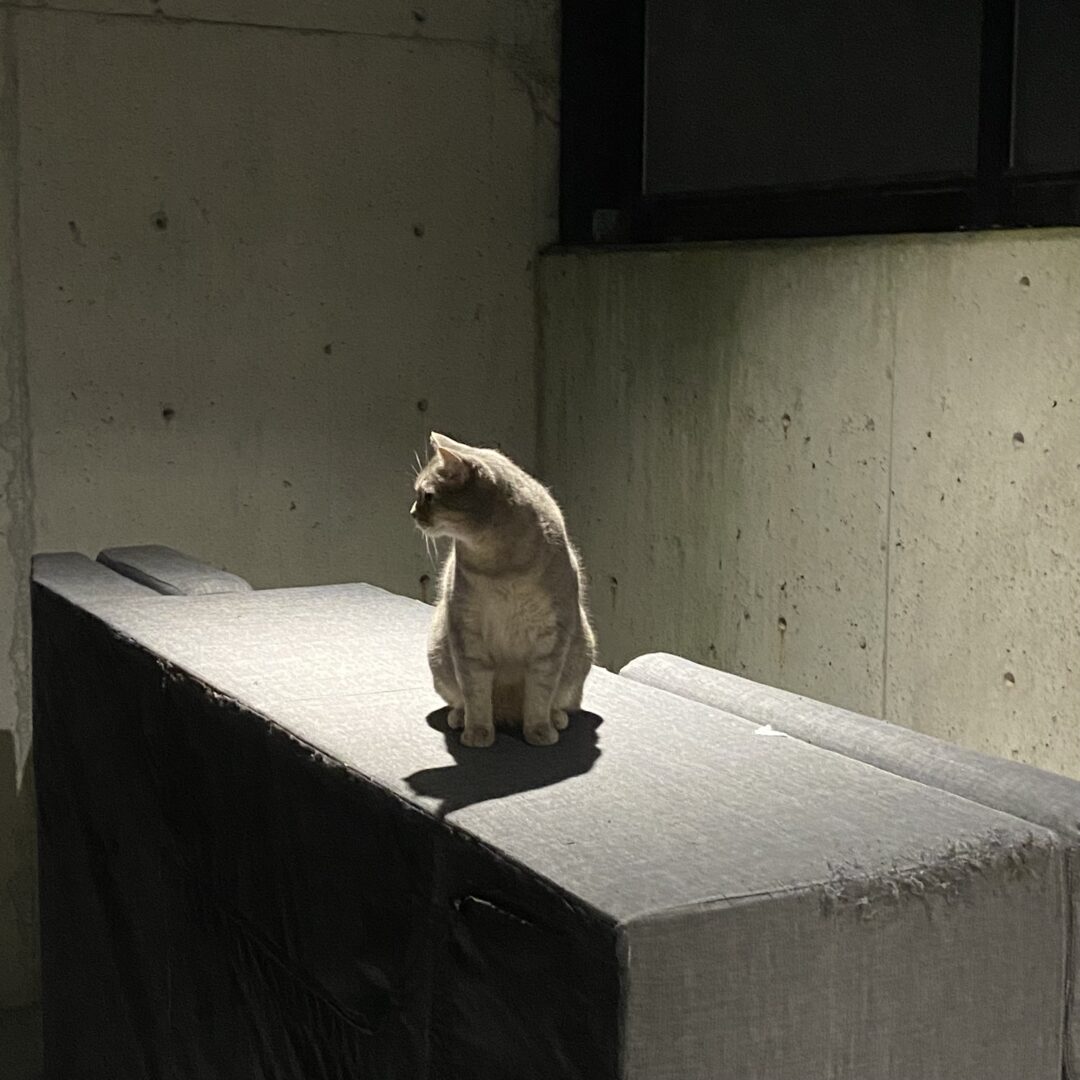Part 1: Summary of the evidence of my learning in EDCI 339
I will demonstrate the evidence through the activity we had in chronological order. During the course, I did Ethical Concerns & Personalized Learning, History & Context of Distributed & open Learning, Equity & Access, and Sharing Resources & practicing “Open.” Those four topics gave me a lot of thinking between traditional learning, open learning, and blended education. Next, I will explain what I have learned through a piece-by-piece activity. In the end, I will link my showcase blog and explain why I chose “this” as my blog.
Activity 1: Ethical Concerns & Personalized Learning
In activity 1, the article we need to read for this activity is written by Priscilla M. Regan and Jolene Jesse “Ethical challenges of edtech, big data and personalized learning: twenty-first century student sorting and tracking .” The article demonstrates how the use of big data threatens the privacy of individuals. In particular, the report gives an example of how big data is used in the education system to classify students by different ethnicities. While I think big data can create a lot of convenience for people, this school directly shows the downside of big data to the fullest. In the end, I still think there is nothing wrong with big data; what is wrong is how people use it. It would be nice if the law could be set more strictly on personal privacy.
The following are screenshots of my comments on my classmates’ blog posts. My group member Lei and Yilin agree that big data should have better laws.
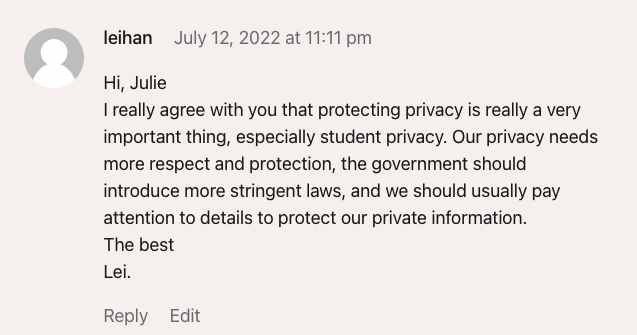
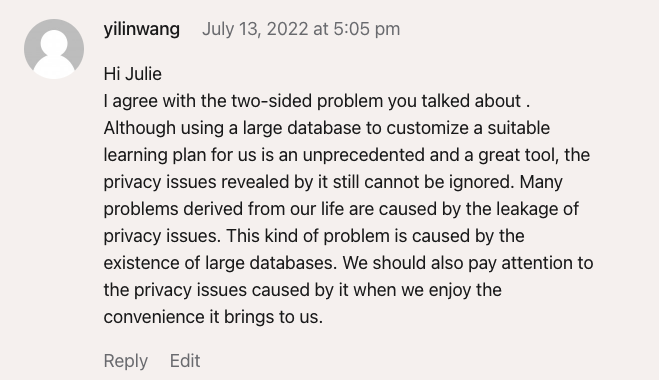
By completing the activity, we not only realized the strength that big data brought to future educational technologies but also criticized that the bad thing about big data is that the law is not strict about personal privacy.
Through this activity, I learned that new technology is still in development, so the law should also keep up with the speed of technological development. Another point is that even without the classification of big data, we should not classify people with discrimination.
Activity 2: History and Context of Distributed & Open Learning
After activity 1’s reading, we criticize big data’s good and bad sides. Then, we discussed the difference between various educational styles, which indicates traditional learning ( face-to-face), online learning (open learning and distributed learning), and blended learning. Next, by reading “Teaching Online: A Guild to Theory, Research, and Practice,” we consider how teachers design online and offline courses from the teacher’s perspective. In addition, we learned specifically about what a MOOCs course is.
Open learning, gives a chance to more people who have financial pressure from traditional education. Furthermore, the article introduces that MOOCs’ advantage is the student can learn knowledge anytime and anywhere. This is a huge convenience to people who also have work but want to improve themselves. However, In this activity, I think that although online classes are great, not just free, and have exciting course designs, they require a lot of autonomy, which is a considerable challenge for people who don’t have it. Therefore I think a blended education would be better.
According to this activity, the following are screenshots of comments I posted on my classmates’ blog posts, and I also attached my reply along with those comments.
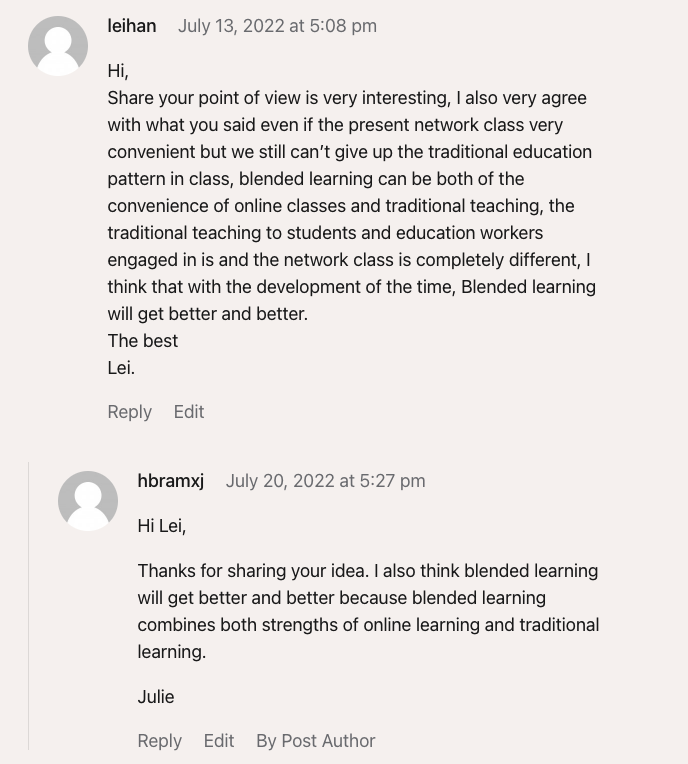
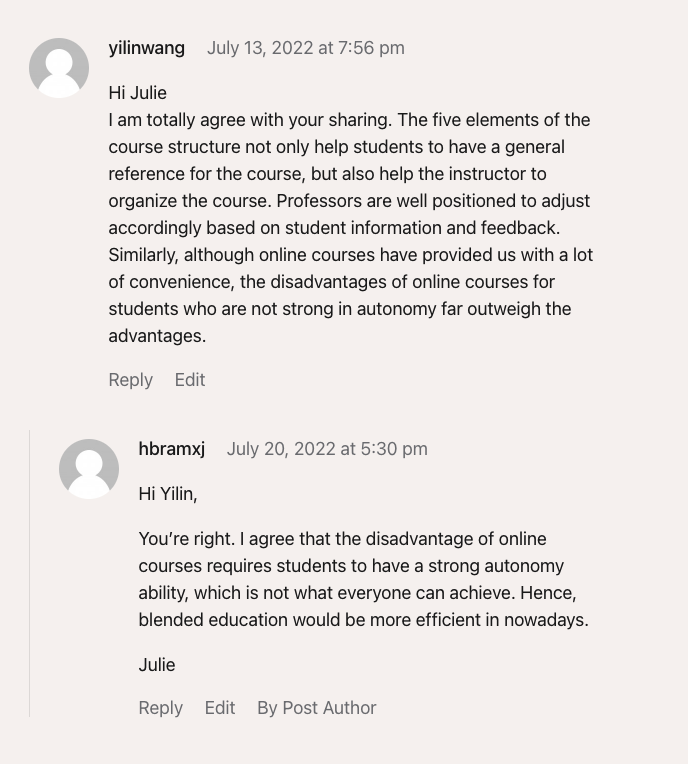
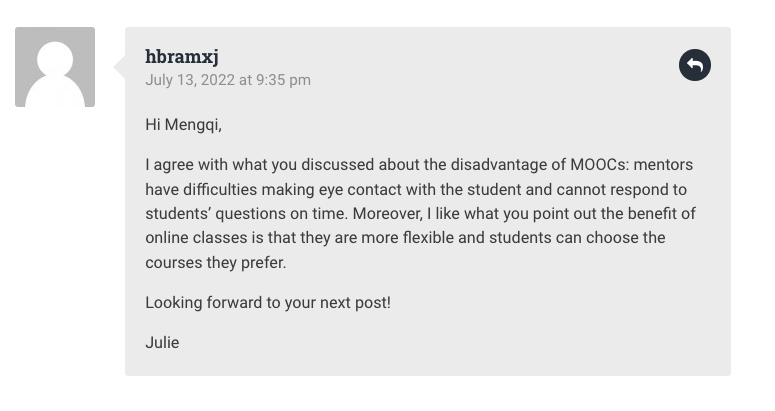
In activity 2, I saw the difference between various educational systems and found out how MOOCs practice digital, networked, and open literacies in support of learning about distributed and open learning.
Activity 3: Equity and Access
After introducing MOOCs, we get in touch with a new kind of open learning (OER) which indicate the educational materials that usually are openly licensed. Because people find out some people have financial issues while learning knowledge. And one of the most significant financial stresses caused is the need to buy high-priced textbooks. What makes it sad is that many students couldn’t afford to buy books and were falsely accused of being lazy and unmotivated to study.
In this activity, I thought that the high price of textbooks was understandable. This is because textbooks may cost a lot of money to write and for the publishers to bind the books. More importantly, the professors who write the texts also receive a portion of the discount, which can motivate more professors to participate in writing better textbooks. This is helpful for the development of education. But from the students’ point of view, the high price of textbooks makes us less effective learners. Moreover, it makes our tuition money poorly spent. However, the advent of OER has been an excellent solution to the students’ need for textbooks which is a good thing to see.
The following are screenshots of my comments on my classmates’ blog posts.
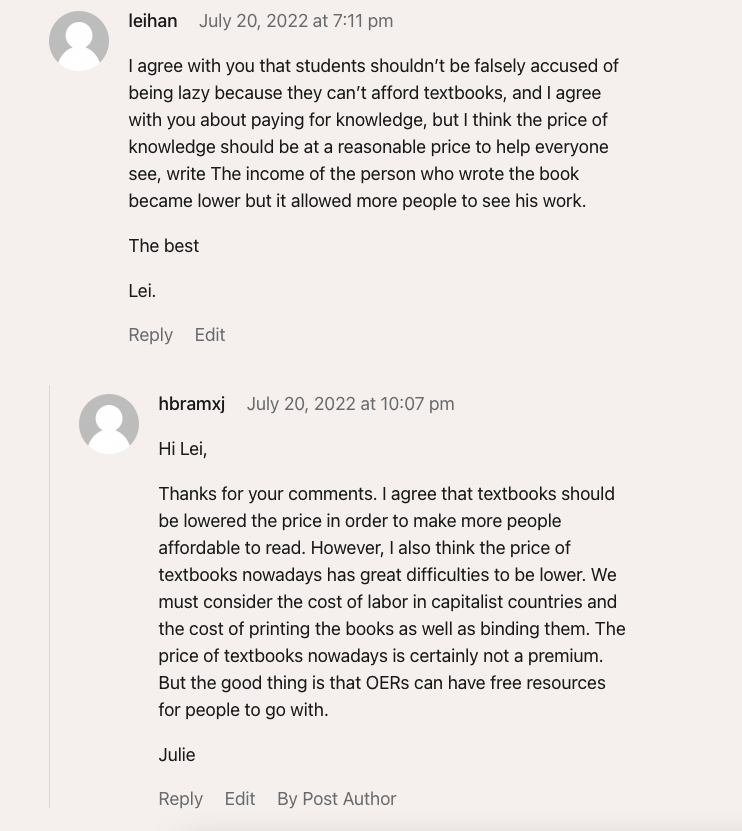
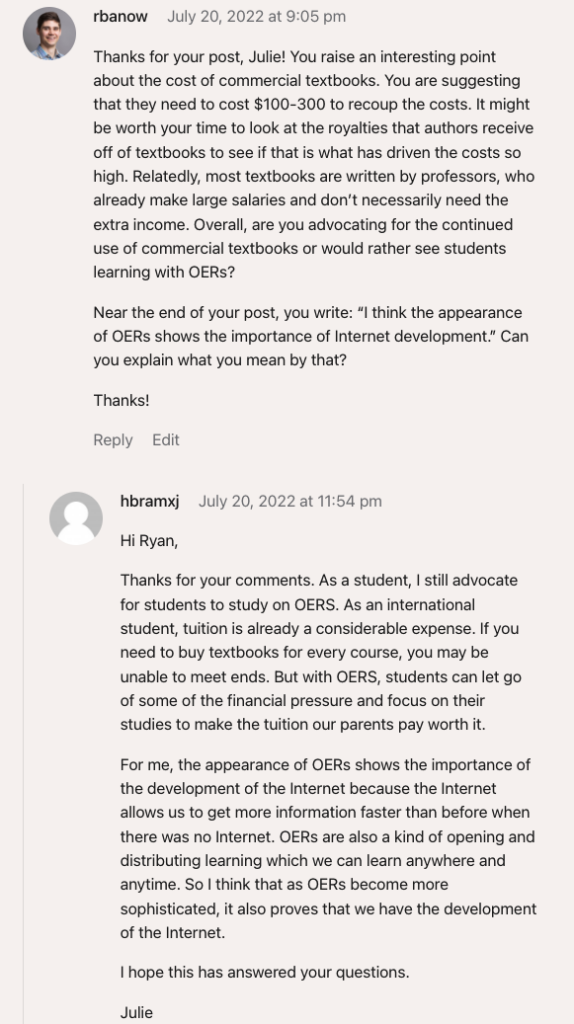
In those screenshots, Lei has a different point of view from mine. From a student’s perspective, I also wish the textbook price should be more appropriate. But we luckily have OER as the second option. Hence, I think OER is the best choice for both perspectives of students and scholars who wrote the textbook.
In this activity, I think we are critically reflecting on and articulating concepts around modality, pedagogy, and access, including distributed and open learning theory, online and open learning history, privacy laws, online learning communities, open research, and open data.
Activity 4: The Digital Equity & Perspective project
In activity 4, we created a character called Lisa. Lisa is a girl who is 18 years old. She is a very talented girl and also has strong autonomy ability. However, she lacks some communication ability. She doesn’t like to speak to others face-to-face. Hence, She is a student who has received benefits from open learning.
Here is a chart about Lisa:

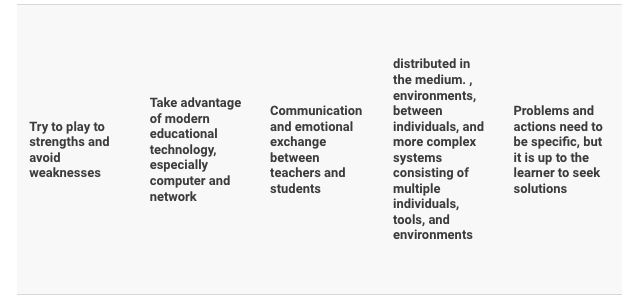
In the group project, I’m able to examine what kind of person suits open learning; for example, when I created some parts of Lisa, I also considered how to reflect her character with open learning. This is a fun project.
Activity 5: Sharing Resources and Practicing’ Open’
In activity 5, we have a further study of what open pedagogy is and how its works. Again, I stand in the teacher’s perspective to consider why OER can be developed. I believe open learning requires more of the teacher to design the course. Because students cannot directly face the teacher, open learning may be less interactive. Poor interactivity combined with a boring course design may not be an effective way to educate. In the article, scholars argue to make open-learning assignments open-ended as well. Let students focus more on how to find the answers and how to apply what we have learned. Make the process bigger than the outcome. Give up rote testing. I think this curriculum design can also be used for traditional learning.
Here is some screenshot I received from my post and the comment I posted to others:
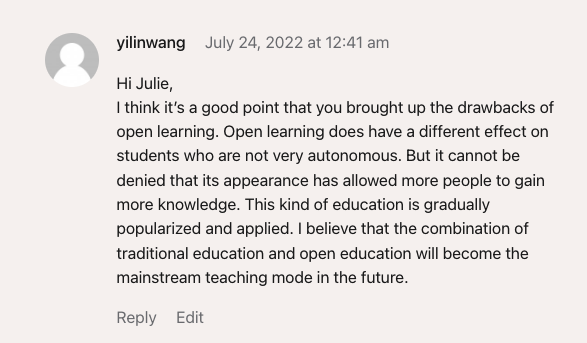
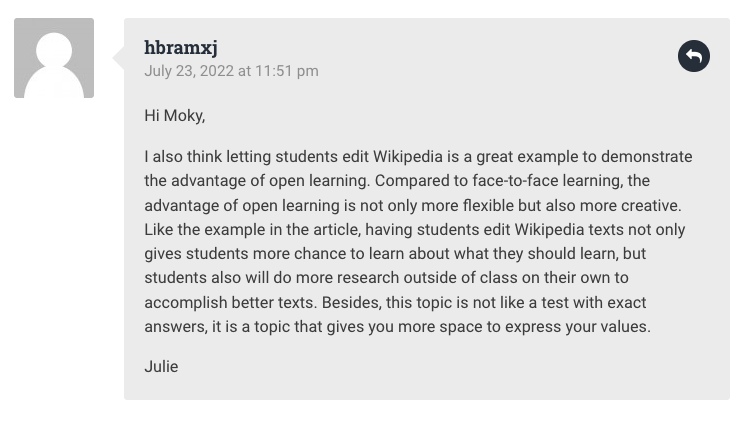
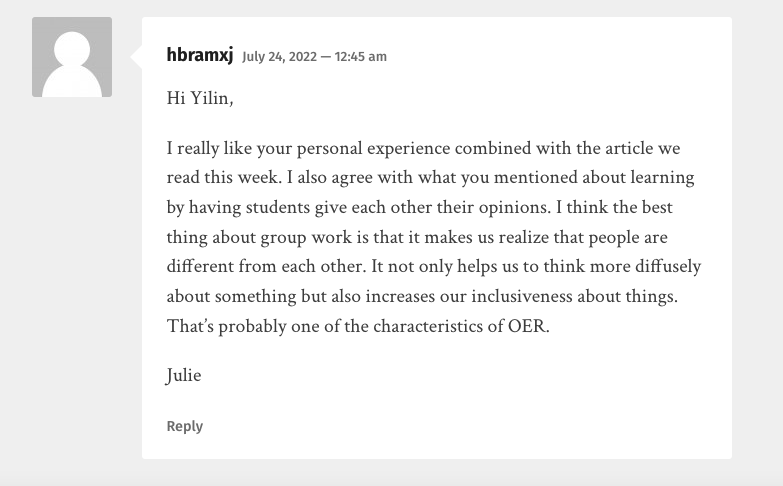
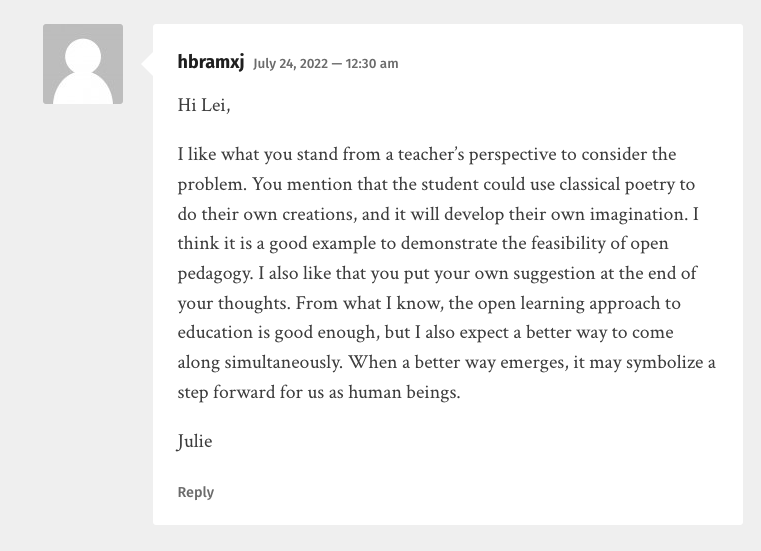

While reading others’ activity posts, I realize we are currently experiencing open learning. I think this may be the potential of human-centered learning in distributed and open learning contexts. For example, we left our comments for the group after reading the article on our own. This process gave us a second thought. This was better for me to help me remember the points the teacher wanted to teach us; at the same time, I remembered the article very well.
Part 2: Showcase blog
The post I want to re-post is the first topic we discussed. After reading the comment my professor- Ryan left me, I think there is a point I didn’t demonstrate well.

Moreover, by reading Mengqi’s article, I also got the inspiration for how to reply to the teacher’s comment.
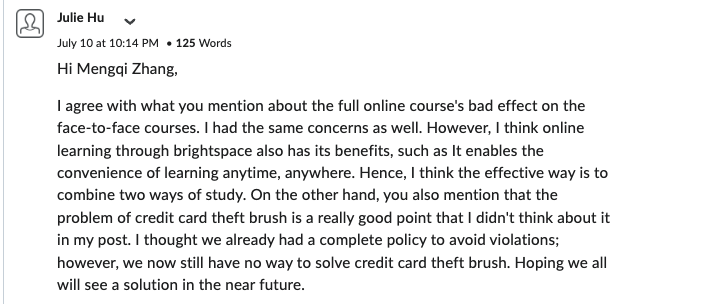
At last, I want to thank our professor. Thanks for your patience in going over each of my posts. I also want to thank my group members. As I wrote in my first post, ‘About Julie,’ I have very serious procrastination. I didn’t think we would have group members for the whole semester. I thought the group members were only set for the group project.

